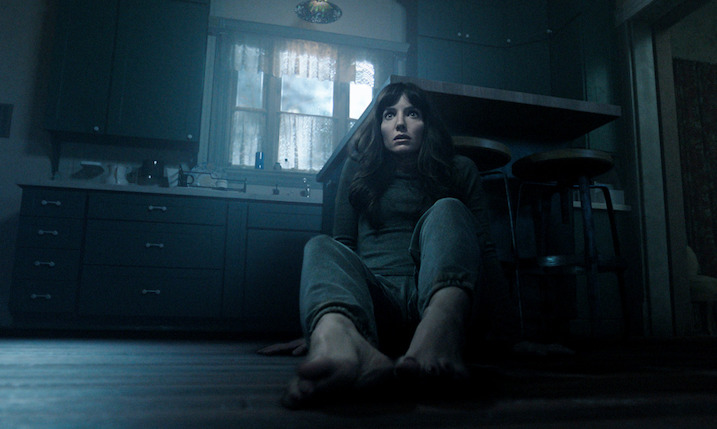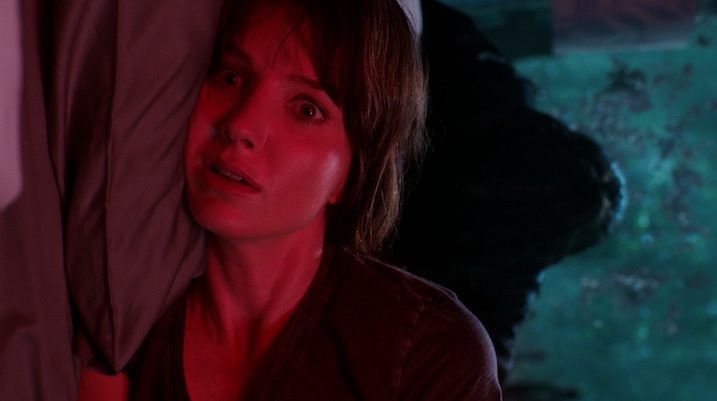James Wan’s ‘Malignant’ is Delightfully Bonkers (Movie Review)
 What’s weirder: a studio horror film that’s not screened for critics or one that’s screened mere hours before release? James Wan’s Malignant is a little of both as some members of the press didn’t get invites while others did, but the screening was, as already mentioned, only hours before the film opened at your local theater and via your TV on HBO Max. Coming off its first weekend, the film has a healthy 74% at RottenTomatoes. Audiences weren’t as kind, though, with Cinemascore being a paltry C. As yours truly hit play at midnight last Friday on HBO Max, I didn’t know what I was going to experience. Would it be a trainwreck from arguably the past decade’s biggest name in horror? Or a masterpiece that would change the scare-fest landscape? At the very least, I’d get to see Anabelle’s own Annabelle Wallis donning a ridiculous raven wig, so that’s something to behold. 111 minutes later…
What’s weirder: a studio horror film that’s not screened for critics or one that’s screened mere hours before release? James Wan’s Malignant is a little of both as some members of the press didn’t get invites while others did, but the screening was, as already mentioned, only hours before the film opened at your local theater and via your TV on HBO Max. Coming off its first weekend, the film has a healthy 74% at RottenTomatoes. Audiences weren’t as kind, though, with Cinemascore being a paltry C. As yours truly hit play at midnight last Friday on HBO Max, I didn’t know what I was going to experience. Would it be a trainwreck from arguably the past decade’s biggest name in horror? Or a masterpiece that would change the scare-fest landscape? At the very least, I’d get to see Anabelle’s own Annabelle Wallis donning a ridiculous raven wig, so that’s something to behold. 111 minutes later…

When Madison (Wallis) endures her third miscarriage at the hands of her horribly abusive spouse (Jake Abel), she sinks into depression. But her longing to sleep away the pain is abruptly seized by visions of a gruesome murder. And then another and another. Her sister Sydney (Maddie Hasson) doesn’t know how to help. Soon a couple of Seattle P.D.’s finest (George Young and Michole Briana White) are on the case. Can Madison help track down this strange, ghastly killer with inhuman movements? And why does she fear said killer is connected to her imaginary childhood friend Gabriel?
That’s merely the setup for James Wan’s return to horror after recently helming DCEU’s smash Aquaman. Wan and his collaborators have an impressive track record for scares in the past two decades: the Saw franchise, four Insidious films, and the ever-expanding Conjuring Universe. Malignant is the kind of “blank check” project a director typically gets to make after a breakout hit. Mr. Wan, after making so many hits (including the non-horror blockbuster Furious 7), you have certainly earned the right to make as many of these as you desire. At least, if I was running Warner Bros.

In hindsight, I honestly think the reason this film was screened so close to release was in the hopes of avoiding spoilers. Love it or hate it, Malignant is the kind of experience that hinges a ton on its final plot twisty moments. I would never spoil what happens, but I highly suggest interested parties see the film with as little info as possible. As a fan of this film, I was delighted by how unhinged my viewing turned out to be. Alone in the dark, I was scared, tense, giggly, and very much surprised in a way I rarely am with modern movies. The highest compliment I can give director Wan and screenwriter Akela Cooper is that regardless of the film’s shortcomings, I was never bored and, by the end, had a big smile on my face (It was dark, so you’ll just have to take my word for it).
Each of the incredibly well-staged set-pieces throughout the brisk run time shows off Wan’s full control. As a master of where to place the camera, there’s an inherent pleasure in seeing how he unfolds each scene. One involves viewing Madison from the tippy top looking down as she makes her way from room to room in her huge home (Has anyone in Wan flick ever not had an awesome place to live?). Other times, we’re stuck in a single space as a wave of CGI transforms a simple kitchen or bathroom into a new room that’s unfamiliar to Madison. Wan has always excelled at staging, and this is some of the best of his career.
He also knows when not to use computer FX. Gabriel, the film’s big bad monster, moves fast, like in an excellent and extended chase sequence where one of the Seattle detectives tries to capture the beastie. Other times, the creature seems to move in an eerily unnatural way. This was done by contortionist/dancer Marina Mazepa. The effect is haunting and thrilling. Let’s just say I do not wish to be stuck in a cage with Gabriel.

Alas, Malignant isn’t perfect, or, more specifically, I think some of the choices Wan has made will irk plenty of viewers. When I speak of “shortcomings’ I’m more focused on what I assume will be the way many might assess the bulk of the cast’s acting. As in, it’s “bad acting.” The thing is, I’m pretty sure Wan’s direction of various flat deliveries of dialogue is intentional. It’s akin to George Lucas’ direction of actors in the prequels. Like Lucas, Wan is a fan of earlier eras of genre, a lot of which by today’s standards might seem “bad.” And what’s tricky is both filmmakers refused to play it for laughs (As opposed to something more akin to the fake trailers in Grindhouse). Many scenes could feel like they feature poor performances. However, there is a method to this madness. Wan leans into a “subparness” for the last act to work. And boy, does it work (It should be noted that it’s also extremely gory, which I dug, but some might be turned off.)
As horror fans, many of us have seen the past decade obsessed with the somber, extremely curated concoctions, generally of the A24 variety. Think of how accurate Robert Egger’s The Witch was. Not a line of dialogue or a piece of cloth felt out of place to the story’s 17th-century setting. Malignant is not that. It isn’t concerned about any kind of realism beyond what works for the story. Consider the original colorful and similarly weird Suspiria from Italian horror maestro Dario Argento. Now think of the more dour, muted (though no less amazing) remake from 2018. Malignant is more akin to the candy-colored original Italian film. In 2021, Wan is aiming for something much needed in modern horror: pure fun.
![]()
![]()
![]()

![]()


















